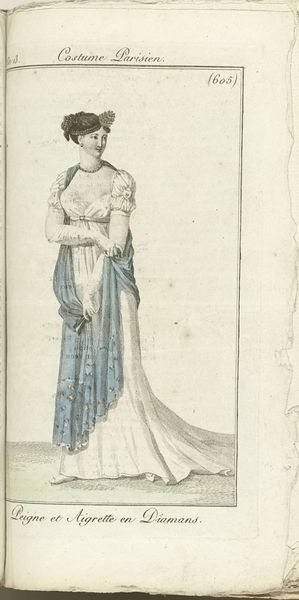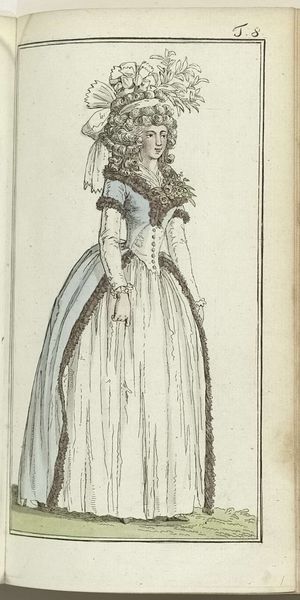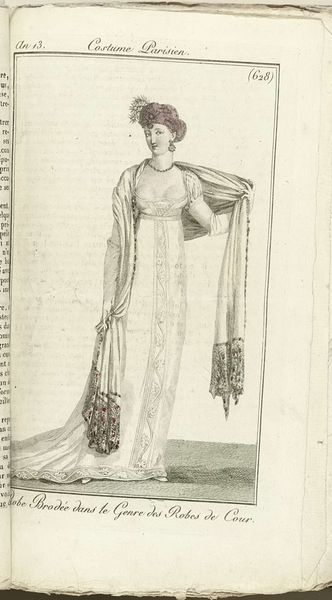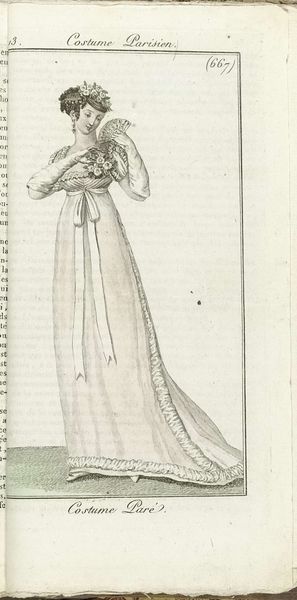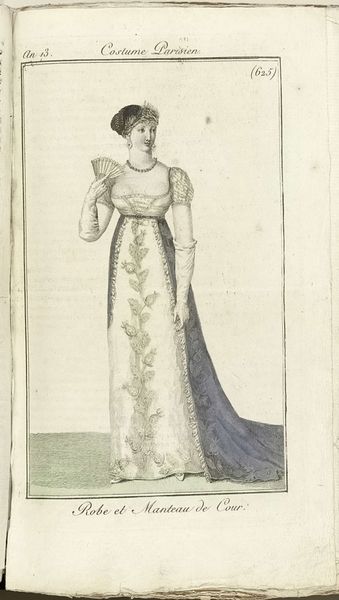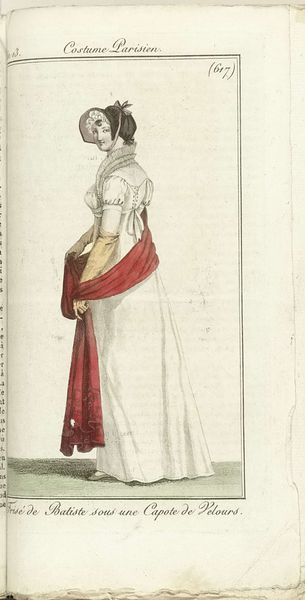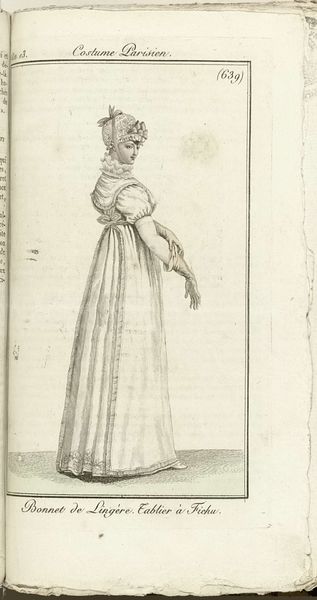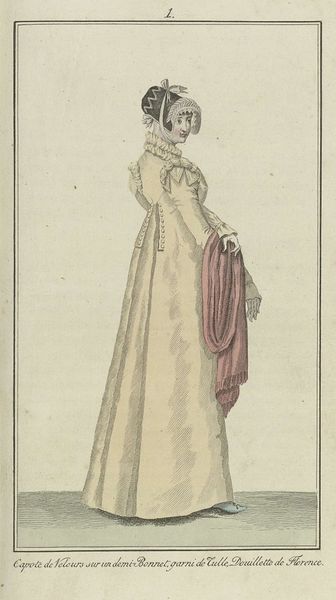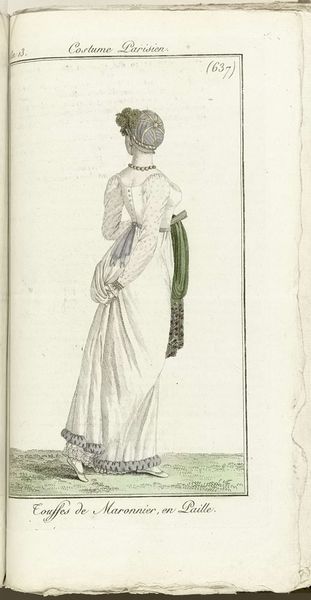
Journal des Dames et des Modes, Costume Parisien, 1805, An 13 (650) Costume Paré 1805
0:00
0:00
drawing, print, paper, ink, engraving
#
portrait
#
drawing
# print
#
paper
#
ink
#
romanticism
#
genre-painting
#
dress
#
engraving
Dimensions: height 181 mm, width 112 mm
Copyright: Rijks Museum: Open Domain
Curator: Here we have a print entitled "Journal des Dames et des Modes, Costume Parisien, 1805, An 13 (650) Costume Paré". It's a work of ink and engraving on paper by Horace Vernet, currently held in the Rijksmuseum. Editor: My first impression is one of constrained elegance. The colour palette is muted, the pose slightly stiff – there’s a formality to the whole image that speaks volumes about the social codes of the time. Curator: Absolutely. And we must contextualise this image within the Napoleonic era. Vernet offers more than just a fashion plate; he's reflecting a specific performance of femininity. The high-waisted empire silhouette, the delicate floral headpiece—it’s all about projecting a refined, almost Grecian ideal. Editor: That Grecian reference is potent, harkening back to notions of liberty and virtue. The woman becomes a symbol – perhaps a somewhat docile one – of the French Republic's aspirations. However, she is also adorned with florals. Curator: True. And consider the role of these fashion journals at the time. They weren't simply about showcasing clothing; they actively shaped and reinforced gender roles and social expectations. They helped dictate how women were to perform within a patriarchal structure, subtly policing appearance and behaviour. Editor: Yes, fashion always tells a story! The seemingly simple choice of silhouette carries powerful symbolic weight. We often see Neoclassical themes to depict morality, ethics, simplicity. Curator: Indeed, but at the same time, these images could also be seen as a form of silent rebellion. By carefully curating their image, women could navigate and sometimes subvert societal constraints. Editor: A fascinating dichotomy. Perhaps that is why this artwork continues to draw our eye centuries later, as a reminder of these historical subtleties. Curator: Agreed. It reveals so much about the complexities of identity and expression within a specific historical moment, allowing for insight into that very time period.
Comments
No comments
Be the first to comment and join the conversation on the ultimate creative platform.

